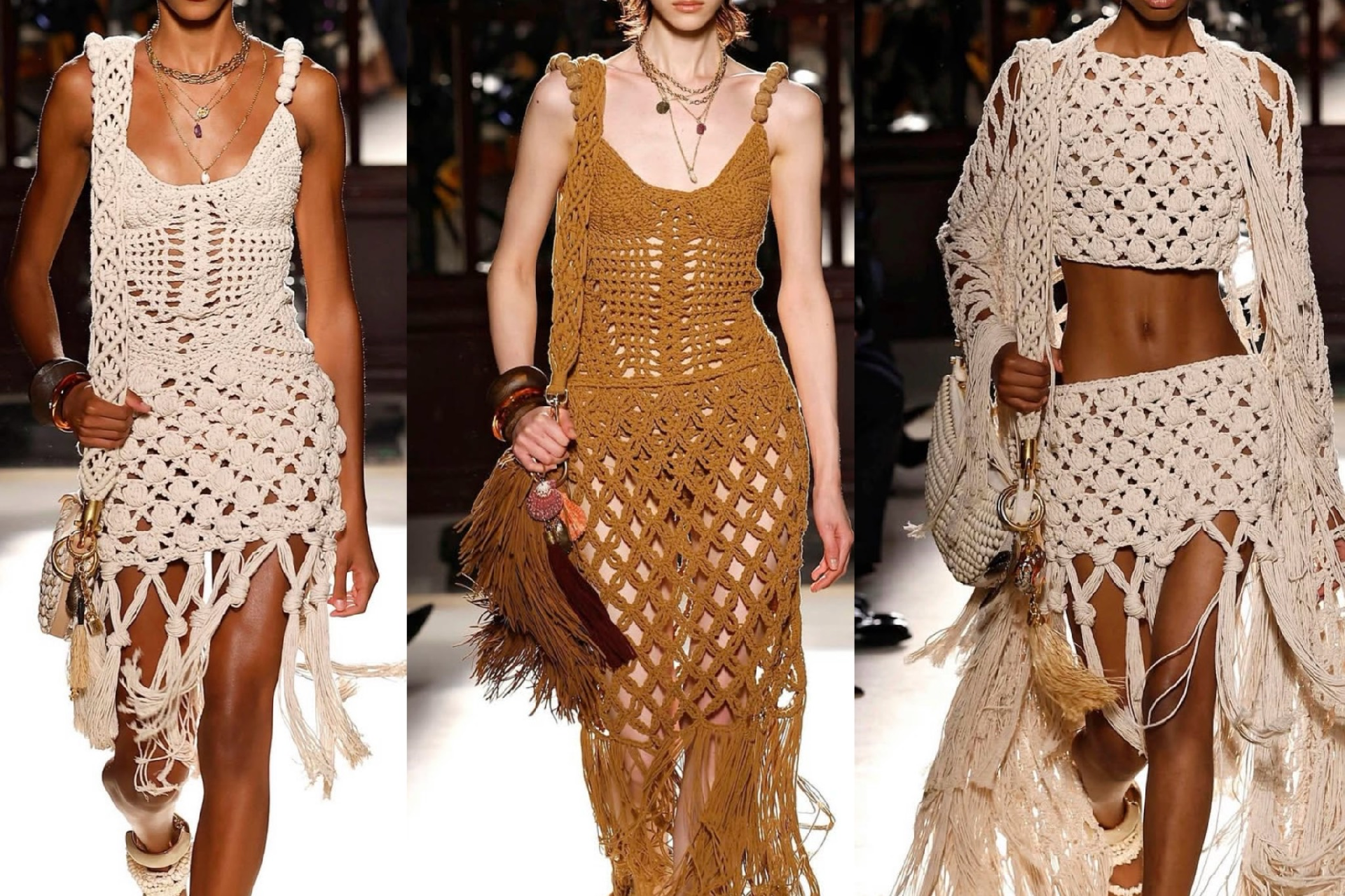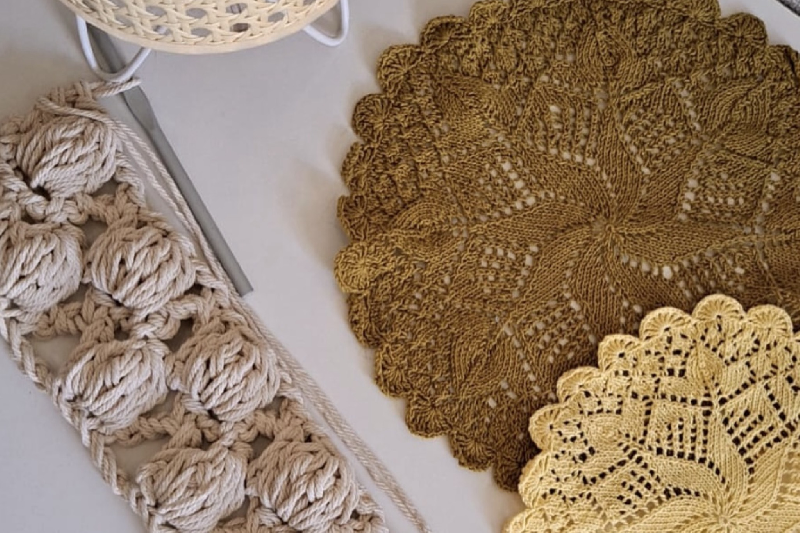
Their talent has captured the attention of Dior, Jacquemus, and Balmain. Les Mains de Mamie, a French brand from Marseille, celebrates grandmothers who knit by hand, creating pieces that bring a fresh, heartfelt twist to haute couture. It is a new kind of luxury, sensitive and rooted in solidarity.
At first glance, Catherine’s flat in Saint-Étienne looks like any other French retiree’s home. Balls of yarn are scattered on the armchair, patterns are scribbled on scraps of paper, an old measuring tape lies nearby, and the television murmurs in the background. But for the past three years, her hands have been knitting for more than just her grandchildren. They now create pieces for Balmain, Dior, and Jacquemus. At 68, Catherine is part of Les Mains de Mamie, a collective of ordinary women who have quietly become the new artisans of haute couture.
The story begins in Marseille in 2019. Aurélie de Barros, a young entrepreneur, was surprised to see her grandmother knitting. She then imagined a model where the talent of these retired women, often overlooked or confined to the private sphere, would become the heart of a social and creative project. Very quickly, Les Mains de Mamie brought together around thirty women, aged 60 to 89. With every order placed on the website, a piece is entrusted to one of them, who creates it at home at her own pace without any industrial pressure. The promise is simple: a handmade knit, signed and shipped with the first name of the grandma who crafted it.

© Instagram: @lesmainsdemamie
The beginnings were modest. The brand first attracted customers seeking authenticity and a strong connection to Made in France. But word quickly spread. In June 2025, Dior commissioned a piece for its Spring-Summer show. Jacquemus soon followed, entrusting the creation of a crocheted dress for its “Le Paysan” collection. The following summer, Balmain invited Les Mains de Mamie to design six macramé and crochet pieces that opened Olivier Rousteing’s show. Some pieces required more than a hundred hours of work. On Instagram, the brand celebrated the result: “Incredible stitches, shaped like a shield of femininity.” On the runway, the creations impressed with both strength and poetry.
When Haute Couture Weaves a Different Kind of Connection
The secret to the brand’s success lies in the meeting of fashion’s search for meaning and the desire of many seniors to feel recognized, useful, and seen. “You cannot imagine the joy in their eyes when they know they are noticed and appreciated,” says Aurélie de Barros.
This revival of craftsmanship also responds to the fatigue of a generation tired of fast fashion. Here, each piece is carefully conceived, unique, and far from mass production. The label carries a first name. Catherine, Annie, Virginie, Nassera—these are hands, stories, and a legacy passed on.
The approach goes far beyond storytelling or nostalgia. Les Mains de Mamie ensures that its artisans receive fair pay, proportional to the difficulty of each design. Payments range from twenty to fifty euros per creation, sometimes debated but always well above standard textile industry rates. The collective champions each woman’s desire, pride, and freedom. Raw materials are carefully selected, and the patience devoted to finishing each piece gives every stitch a value that cannot be manufactured. “It is not just crochet, it is a tribute to the beauty of French craftsmanship,” the brand said in a statement following the Balmain show.

© Instagram: @lesmainsdemamie
The phenomenon is not limited to France. In Quebec, the brand Gibou entrusts the making of its winter accessories to local retirees, and each hat or headband carries the name of the artisan who made it. The trend is also spreading to Italy and Spain, where grandmother-run workshops create pieces for designers seeking uniqueness. According to Trendwatching, the “human value” of clothing has become a purchasing factor for more than half of consumers under 35 today.
Knitting makes its way back to the runway, not as a nod to the past, but as a reflection of a present in search of grounding. It represents a new idea of luxury, one defined not by the rarity of materials but by the care of the hand and the memory behind each stitch. This movement speaks to a society learning again to listen to its elders and to give meaning to its choices. For Catherine, the experience has transformed how people see her. “My family didn’t always understand why I spent hours at my needles. Now they are proud, and I feel useful, truly useful.”
Les Mains de Mamie does more than revive knitwear. The brand opens haute couture to a new generation, gives a voice to those who were forgotten, and allows clothing to return to what it should never have stopped being: a living story, a tangible link between two worlds that were once so far apart.


Comments